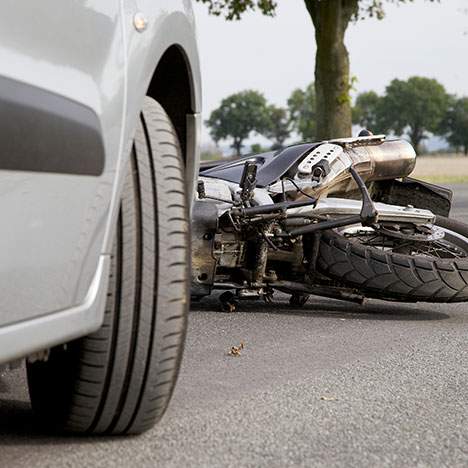The margin for error between a beautiful day of riding your motorcycle along California’s iconic Pacific Coast Highway and crashing your bike is small. It only takes one wrong turn, one patch of loose gravel or one driver changing lanes without paying attention. Plus, the average ground clearance between your bike and the road is only four to seven inches. If something goes wrong in those inches between you and the pavement, combined with any of the aforementioned hazards, you may be caused serious injuries and even death. How often do motorcycles crash, and what are your legal options?
Dangers of Motorcycles: Injuries and Fatalities
Motorcycle accidents happen more often than people think, and even the smallest crash can have huge long-term health impacts. According to the National Safety Council (NSC), motorcycle accidents are on an upward trend; fatalities increased by 11% between 2019 and 2020, with 5,579 fatalities in the United States in 2020 (about 15 deaths per day). However, the number of non-fatal injuries has decreased by 2% to 82,500 injuries (almost 225 accidents every day). In 2018, motorcyclists were 27 times more likely than passenger car occupants to die in a crash per vehicle mile traveled.
Alcohol is still the leading cause of motorcycle accidents in both the U.S. overall, as well as in California. In 2020, almost 75% of all motorcycle fatalities in California involved alcohol. Of those 355 fatalities, 15.8% were caused by severely imparted motorists with a blood alcohol level more than 0.15.
City or Country: Where Do Most Motorcycle Collisions Occur?

Since 1977, the Insurance Institute of Highway Safety (IIHS) has been collecting data on the number of fatal motor vehicle accidents on both rural and urban roadways. Rural fatalities were always more common until 2016, when urban accidents accounted for 55% of all motor vehicle fatalities. The National Safety Council has confirmed this with their 2020 findings. They found 60% of motorcycle fatalities happened on urban roads, with 78% occurring in good weather and the majority of collisions happening on trips less than five miles long. The IIHS also found that May through September were the most dangerous times in the U.S. to operate a motorcycle, peaking in August with 756 deaths in that month in 2020.
Between manufacturers and owners modifying motorcycles to make them faster and more powerful, and more people moving from rural communities to large city centers, it’s no wonder cities are seeing increased motorcycle fatalities. Non-interstate roads like those in cities are seeing the highest number of motorcycle deaths — 36% compared to only 9% on interstates and freeways.
States are stepping up laws in their major cities to help keep motorcyclists safe. The California Vehicle Code 22517, for example, states: “No person shall open the door of a vehicle on the side available to moving traffic unless it is reasonably safe to do so and can be done without interfering with the movement of such traffic…”
Motorcycle Accidents in California and the Injuries They Cause
The main contributors to accidents on all California roadways are:
- Unsafe lane changes
- Speeding
- Driving under the influence
- Car door injuries
- Lane splitting
- Sudden stops
- Inexperienced drivers
- Right of way accidents
- Dangerous road conditions
- Motorcycle malfunctions and defects
As a state that has both at fault and no-fault insurance, you could be entitled to certain insurance benefits — even if you’re at fault for the accident. That’s why it’s important to have an expert motorcycle accident lawyer in your corner that can help you navigate California’s motorcycle laws and how they can impact your insurance options, especially when dealing with injuries.
With the open road only inches away at high speeds, even minor motorcycle accidents can result in serious injuries and lifelong physical, mental and economic challenges. Because you’re not securely harnessed in a motorcycle, injuries can occur from head to toe. This could include head and brain injuries, spinal cord injuries, leg and foot sprains, damaged organs, broken bones, road rash, and eye and face trauma — even when wearing a helmet.
Although helmet use can mean the difference between minor and major head trauma, more than 60% of all motorcycle drivers fatally injured in 2020 were wearing helmets. According to California’s Department of Motor Vehicles (DMV): “All riders and passengers are required per CVC §27803 to wear a U.S. Department of Transportation (DOT) compliant motorcycle safety helmet when riding…”
Motorcycle Accident Lawyer: Riverside and Other California Counties
No matter where you live in the U.S., if you drive a motorcycle and are in an accident, it’s best to get legal advice from an expert in your state — and even county. For example, California’s motorcycle laws are unique as they are one of the few states to allow for lane splitting. Motorcycles and bicycles are legally allowed to ride the white line between traffic to help reduce accidents and ease traffic congestion.
It’s not a matter of how often do motorcycles crash, but what your legal options are if you have been involved in a motorcycle accident. If you’re looking for the best motorcycle lawyer in California, contact Avrek Law. With more than 50 years of combined experience, our experienced attorneys will help you understand the legal options and ensure that you receive the full motorcycle injury compensation that you are entitled to.
The consultation is free and you’ll get advice from a law firm with more than $1 billion recovered in more than 45,000 cases. View one of our locations or contact us for a free consultation today!
